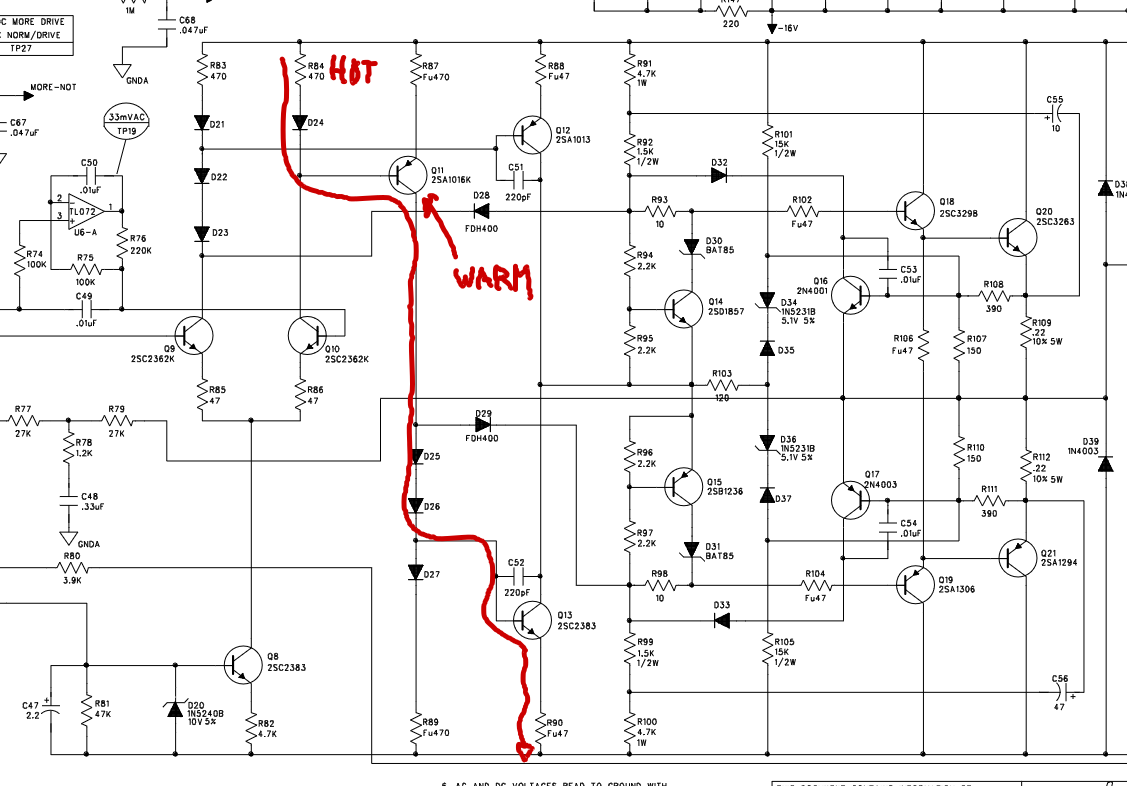Hi all!
I'm fiddling around a Frontman 212R, plauged with the infamous "pop/crackle" sound caused by mute circuit.
While powering for initial testing, some
magic smoke escaped from R84 and output went to -30(ish)V. I then disconnected the muting circuitry snipping out R74 to simplify the troubleshooting.
This is the situation: R84 is blowing out because 85mA are flowing through. After some measures, this current path should be the one depicted in red:

Q10 base-emitter is reverse biased (-3ish V), even if U6-A is doing his best to keep the base positive.
Every single diode and transistor is looking fine when probed for base-emitter and base-collector diodes, and this makes me going nuts

Hints?
PS: sorry for these vague measurements, I need to quickly turn on mains supply, take a look at the bench multimeter, then turn off before R84 will burn with flames and fumes.